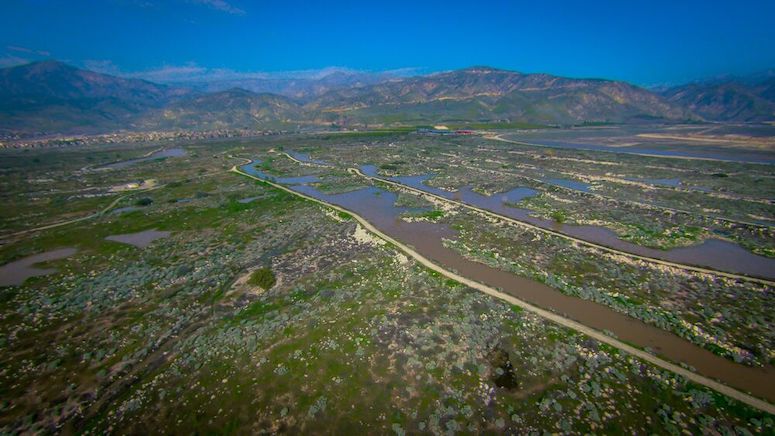
In the clutches of California’s third driest year in a century, the San Bernardino Valley Water Conservation District reports higher than average recharge of local surface water when compared to other dry years.
Planning for that not-so-rainy day has helped replenish the Bunker Hill Basin with above-average levels of groundwater storage when compared to other recent periods of drought, the San Bernardino Valley Water Conservation District announced today.
Totals for the 2020-2021 water year, running from Oct. 1 to Sept. 30, reflect a 66% increase from the amount of native surface water stored in previous dry years. A total of 7,266 acre-feet of native surface water was stored in 2020-21 compared to 4.004 acre-feet in 2007-2008; 6,097 acre-feet in 2013-2014; 2.625 acre-feet in 2014-2015; 4,277 acre feet in 2015-2016 and 4,617 acre feet in 1017-2018.
This year’s water storage, achieved at a time when local precipitation was just 44% of normal, totals about 2.4 billion gallons, enough to serve nearly 22,000 families for a year.
General Manager Daniel Cozad attributes the higher-than-average levels of dry weather storage to the work of staff preparing the Upper Santa Ana River Wash for optimal surface water capture, and to the recent completion of the District’s Plunge Creek restoration project.
In the near future, the active recharge projects done in coordination with the San Bernardino Valley Municipal Water District will contribute to higher levels of recharge. And long-planned diversion improvements at Mill Creek are expected to be underway next year making the most of dry years such as this one.
These and other collaborative approaches serve as a model for other regions to follow. At a time when much of the state faces mandates to increase groundwater storage, local agencies have been working together voluntarily – on recharge infrastructure projects and through participation in the San Bernardino Basin Groundwater Council – to ensure the sustainability of the region’s underground water storage.
“California will be seeing wetter wet periods and drier dry spells in the years ahead,” Cozad said. “We have been preparing for that and are building infrastructure to capture as much water as we can no matter what the weather brings us.”
About the San Bernardino Valley Water Conservation District
For nearly a century, the SBVWCD has stewarded the San Bernardino Valley water basin and the native species of the Upper Santa Ana River Wash. Its collaborative approach to project management assures high-quality local water supplies for people, agriculture, and the environment. This includes groundwater recharge and oversight, and protection of habitat and native species in the Wash. Visit www.sbvwcd.org.
